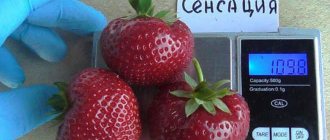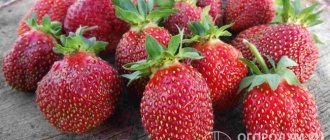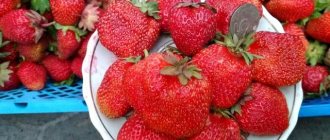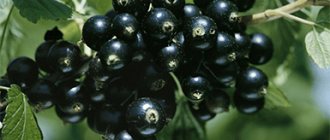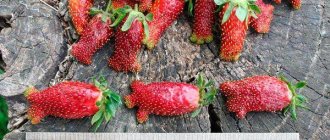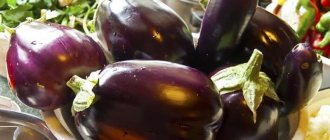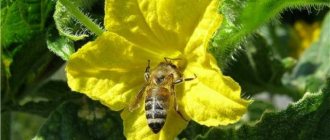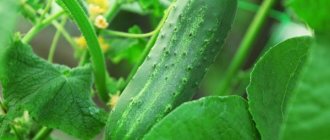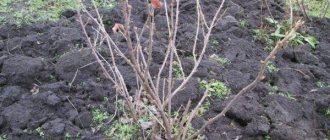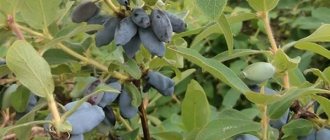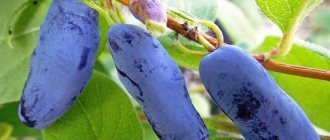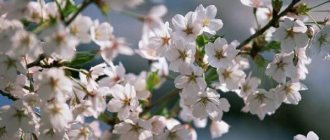Briefly about strawberries
Strawberries are a perennial herbaceous crop, from the strawberry genus, rose family. Vima Rina is a remontant variety of garden strawberry. These varieties have become very popular lately. And this is not surprising, because their main advantage is that you can get a harvest almost the entire season. But even these varieties have their own characteristics, advantages and disadvantages. All of them need to be taken into account before starting to grow. This variety comes from the Dutch series called Vima. There are four best known species in this series:
- Zanta;
- Rina;
- Xima;
- Tarda.
Strawberries Vima Rina: photo of the variety
Rina is the most popular and she is the only one that is a remontant and neutral strawberry.
What is the culture of remontant strawberries? Vima Rina
This concept of remontance defines itself as the ability to bloom and bear fruit throughout the season. These varieties also have their own varieties:
- Short day;
- Neutral day;
- Have a long day.
Short day strawberry
This is the most familiar variety to everyone. She is considered a typical and traditional representative of the culture. Crop ripening occurs only once during the growing season. Bud formation occurs only on short daylight hours, less than twelve hours. This happens mainly from the end of summer to the beginning of autumn.
Long Day Strawberry
In such varieties, the formation of flower buds occurs during daylight hours, sixteen to seventeen hours long. In one season it can please you with two or three harvests.
Strawberry neutral day
In such strawberries, the formation of flower buds does not depend on the length of daylight hours. The only thing that can affect them is the temperature and percentage of air humidity. That is why such strawberries can be grown all year round in warm greenhouses. Their buds develop cyclically, a process that takes approximately fifty to sixty days. When grown in open ground, such strawberries will bear fruit two to four times. Abroad, the concepts of remontant strawberries and day-neutral strawberries are not separated; this is due to benign climatic conditions. In Russia, it is customary to separate them, since among remontant strawberries you can also find long-day berries, such as:
- Garland;
- Tuscany F1;
- Moscow delicacy;
- Temptation F1 and so on.
Further care
Planting Dutch hybrids does not pose any particular difficulties even for novice gardeners. When planting in autumn, the pit is prepared 3 weeks before. 6 kg of manure, 20 g of potassium chloride and sulfate and 35 g of superphosphate are added per 1 m2. A thick layer of drainage is placed at the bottom of the planting hole to avoid rotting of the root system when the soil becomes waterlogged.
The yield will depend on how you care for your strawberries. For ideal growth, fruiting and ripening, the following measures must be taken:
- Watering is necessary abundant but rare. If there has been no precipitation and the ground under the bushes has dried out, water with plenty of water. The next watering is done again after drying.
- If you have just planted bushes and fertilized the soil according to all the rules, you will not need fertilizing this season. Start making them only next year.
- Consistent weeding will allow you to achieve higher yields and larger fruits.
- Be sure to loosen the soil between the rows.
- Do not wait until pests or diseases attack the bushes; carry out preventive treatments according to schedule.
READ MORE: Tomato Aurora: characteristics and description of the variety, its yield with photos
If you want to get a good harvest of Vima Rina strawberries, you must adhere to certain care rules, which you will learn about below.
The first watering begins in late April. This should be done in warm, dry and cloudless weather. Bushes planted in spring require regular watering before rooting - 3 times a week, provided the weather is not hot.
For mulch, use: rye or wheat straw, dry grass. You should not mulch with straw for a newly planted crop.
Proper feeding of plants is an important stage. If strawberries planted in spring have already been fertilized, they do not need fertilizing this season. It is worth replenishing the supply of nutrients starting next season. Experienced gardeners recommend using organic and mineral fertilizers alternately. Next, we suggest that you familiarize yourself with several feeding options.
Planting is carried out in autumn or early spring. Bushes planted in spring can produce a harvest within 2 months. But according to reviews from gardeners, it is better to cut off the first flower stalks of the Vima Rina variety of strawberries so that the plant first gets stronger and only then produces large and sweet fruits.
It is better to choose a site that is sunny, on the south or southwest side, without drafts. It is necessary to prepare the soil in advance by digging and adding organic and mineral fertilizers, and forming beds.
The landing proceeds as follows:
- The holes are dug, maintaining 40 cm from each other in the row and 60 cm between the rows.
- Drainage is placed at the bottom and a small layer of fertile mixture of potassium nitrate, superphosphate and soil is poured.
- Next, install the seedling, cover it with the rest of the mixture, compact it and water it.
- When the water is absorbed, mulch the soil around the seedling with peat, or mixed with sawdust.
Attention! Strawberries of the Vima Rina variety will like the area where carrots or radishes used to grow. You should not plant strawberries where potatoes or tomatoes previously grew.
Due to the fact that remontant strawberries of the Vima Rina variety bear fruit throughout the entire growing season, the soil quickly becomes depleted and it is necessary to regularly fertilize. Fertilize the soil before flowering, fruiting and after the next harvest. The first feeding consists of nitrogen fertilizers. Next, phosphorus-potassium additives are added. Mineral and organic fertilizers alternate.
Strawberries of the Vima Rina variety are sensitive to lack of moisture and with insufficient watering this affects the size and taste of the berries. Therefore, strawberries need to be watered regularly, especially in dry and hot areas. The focus should be on climatic conditions. It is recommended to use a drip irrigation system.
Mulching with dry grass or straw between the beds allows you to retain moisture longer and reduce the need to weed the soil.
Preparing for winter
Strawberries of this variety do not require annual planting. Its life cycle in one place is from 3 to 4 years. It is adapted to grow on any soil and in any climatic conditions.
Vima Rina strawberries can overwinter without shelter in the open ground, under snow cover. In case of a frosty winter with little snow, it can be covered with spruce branches or construction insulation.
Strawberries Vima Rina: description of the variety
Wim Rin's garden strawberries were bred by Dutch breeders. It happened completely by accident. Thanks to what varieties this strawberry was bred, it is not known for certain, but some factors indicate that among the parent specimens there was a selva variety.
Bush and foliage
The bushes are quite strong, moderately spreading and quickly gain growth. The foliage grows very abundantly, and it is this that saves the harvest during the summer heat. There are many leaves, but they are small in size and have a soft greenish tint. The upper part of the leaf protrudes outward, it is embossed and glossy, the edges are jagged. The inflorescences grow at the same level as the foliage, are small in size, and typically white in color. There are not very many ostsovs, so propagation in the usual way is a little difficult.
Vima Rina strawberries: how to propagate?
It can be propagated by seeds or by dividing the bush, approximately once every two to three years.
Durability
This variety is quite resistant to winter frosts, but although it can tolerate drought, it is still not advisable to allow it.
Watering
Watering should be timely and abundant.
What kind of Vima Rin crop can you harvest?
The yield is quite high; from one bush you can collect from eight hundred to one thousand two hundred grams of delicious berries.
Rules for caring for strawberries
Watering
Vima Rina, like most varieties of garden strawberries, is a fairly moisture-loving variety. But at the same time, strawberries tolerate short-term droughts quite well.
The first watering of the crop is carried out at the end of April, if the weather is dry and warm. In case of heavy rains, you should refrain from watering.
Between May and June, the plant needs to be watered at least 6 times. From August to September, the frequency of watering is reduced to only 2 waterings.
On average, when watering this variety, a bucket of water is consumed per 1 m2 of planting.
Water strawberries only with warm, settled water. Also, watering is carried out only in the early morning or evening, when the sun is in its inactive phase.
Mulching and loosening the soil
Mulching is not mandatory, but a very useful procedure. If you mulch the beds, you will be able to retain soil moisture and protect the crop from weeds. Mulched soil will help reduce the amount of loosening and weeding. Among other things, a mulched bed helps protect the berries from getting dirty, which in turn prevents them from premature rotting.
As for loosening, this is a mandatory measure that many people neglect. Strawberries develop very poorly in compacted soil. Frequent watering leads to the formation of a crust on the soil surface, which does not allow oxygen to pass through, thereby preventing the enrichment of the root system. Loosening allows you to destroy this crust. You need to loosen the soil as needed, but usually this is done after several waterings of the crop.
Fertilizers
For Vima Rina, fertilizing is the key to a good harvest. If the holes were well fertilized when planting the seedlings in spring, then there is no need to feed the strawberries this season. But starting next year, it is simply necessary to replenish nutrients.
We also recommend reading: Description of the strawberry variety Vima Zanta
Vima Rina's standard fertilizer scheme is as follows:
- In spring, strawberries need nitrogen for rapid growth of green mass. It will also awaken the plant from winter sleep faster. Prepare a nitrogen-containing solution in the following way: dilute 2 cups of cow manure and 1 tablespoon of ammonium sulfate in a bucket of water. Each bush is watered with approximately 1 liter of solution.
- During flowering, strawberries need to be fertilized with the following solution: 1 kg of chicken manure is diluted in a bucket of water.
- Nettle infusion shows very good results. To prepare it, you need to chop the nettles and fill it with water. All this is infused in the sun for 7 days. Then the infusion is strained and diluted with water in a ratio of 1:10. This fertilizer is used during flowering and after harvest.
Pests and diseases of the crop
In fact, Dutch strawberries have a fairly strong immune system. However, if you do not properly care for the plant, it is possible that a number of strawberry diseases and pest infestation may develop. Here is a list of the main problems this variety may encounter:
- Gray rot. With this disease, strawberry fruits are covered with a thin layer of gray fluff. Ultimately, this leads to the berries starting to rot. To combat this disease, special pesticides are used, which can be purchased in specialized stores.
- White spotting. With this disease, small white spots form on the leaves, peduncles and petioles. As the disease progresses, the spots begin to merge, which ultimately leads to the death of the entire plant. This problem can be solved with iodine infusion. To prepare it you need 50 ml of iodine and a bucket of water. Infected bushes are treated with the prepared solution.
- Powdery mildew. This disease develops in conditions of high humidity. With powdery mildew, a white coating appears on strawberry leaves, which then turns purple. The leaves begin to curl, the flowers are poorly pollinated, and the fruits ripen ugly and deformed. In addition, the disease affects the taste of the berries. This problem can be combated with the help of special fungicides.
- Earth mite. This pest sucks all the juices out of strawberries. To combat earthen mites, it is best to use special fungicides.
- Slugs. A dangerous pest, as it is active mainly at night. Slugs cause damage to the plant at any stage of its development. To combat these parasites, they use either wood ash, treating the area with it, or setting up beer traps.
About growing Vim Rin
If you give your strawberry bushes proper care and comfortable living conditions, they will be more tolerant of all possible diseases.
In the greenhouse
If you have a warm greenhouse and comfortable conditions in it, then you can enjoy this berry until the new year. Afterwards you will need to give the bushes a rest for sixty to ninety days. After they have passed, you need to provide proper care and then the berries will appear in mid-spring.
In the greenhouse
If you cultivate this variety under a film cover, like a greenhouse, then you can harvest the crop at the end of the spring period, and it will bear fruit until the very end of the autumn period.
When grown in open areas
When cultivated in open areas, the number of fruits decreases slightly. And the number of harvest waves is reduced by two to three times. You can start collecting from the beginning of summer, before the first frost.
Characteristics of Vima Rin fruits
The strawberry variety Vima Rina leads among others due to its taste. Let's look at everything in order.
- Vima Rina fruit shape: The berries are slightly elongated and resemble a cone in appearance. The tone is intensely reddish. The seeds are quite small and cannot be felt at all when eaten.
- Berry pulp : bright scarlet color. Quite strong and even a little crunchy.
- Size and weight of Vima Rina berries : The berries are quite large, on average weighing thirty-five to forty-five grams. But there are some that grow up to seventy grams. With the arrival of the autumn period, they lose a little in their weight and size.
- Taste: The taste is quite unusual. It is strawberry, but there are also distinct notes of cherry.
- Aroma: The smell is very diffuse, strawberry.
- Suitability: Berries can be eaten fresh, you can make jam, or make compote. Also good for drying and freezing.
- Transportation: They are not stored for very long, but not for a short time. Can withstand transportation over short distances.
Varietal characteristics
Vima Rina is characterized by powerful, well-leafed bushes. The leaf blades are rich green in color, with well-defined ribbing. Petioles of medium length, slightly pubescent. White flowers are collected in spreading inflorescences. The flower stalks are located at the level of the leaves and fall to the ground under the weight of the fruits. The adaptation is below average.
Vima Rina's berries are large, round-conical, elongated, with a well-defined neck. In appearance: deep red color with an attractive glossy surface. The pulp is dense, juicy, delicate consistency. The taste is rich, with a slight sourness. In terms of taste, it is one of the best varieties of the remontant group.
The average fruit weight is about 35-40 g. At the same time, the weight of the first berries can reach up to 70 g or more. When using intensive growing technologies, up to 1 kg can be obtained from one bush per season. fruits In protected soil conditions, productivity indicators almost double. The fruiting period of Vima Rina lasts from the end of June (Central Russia) until the onset of the first frost. The berries do not become smaller by the end of the season.
Mildew on grapes: 125 photos of the main signs, methods of treatment, treatment and prevention. Video instructions on how to combat the disease for beginner gardeners
Characteristics when growing Vima Rin
This variety can be planted at almost any time. But still, the best option would be: planting at the beginning of the autumn period, or at the very beginning of spring. Buds are formed at temperatures from plus five to plus thirty.
An interesting fact about this variety is that if you plant a bush in the spring, there is a high probability that it will begin to bear fruit in the middle of the summer. But of course, comfortable conditions will play an important role here.
The seedlings adapt and take root quite quickly. Seedlings need to be selected so that they have an undamaged, developed and healthy root system, as well as six already formed leaves. It can grow on one piece of land for approximately twenty-four to thirty-six months. There will be no loss of harvest as a result; it may even increase. But in order for the harvest to be plentiful and constant, you need to apply suitable fertilizing in a timely manner. Also, the bushes need to be updated. You can grow it from tendrils, seeds, or simply divide the rhizome.
Quite often, gardeners refer to this variety as an annual. Those bushes that have already produced fruit are removed. And in their place they leave young seedlings that were obtained from sockets. Before planting, it is very important to stratify the soil using organic fertilizers.
But if you feed strawberries only with fertilizers containing nitrogenous elements, you will significantly increase your plant mass, but there will be less yield and growth. It is recommended to use such fertilizers only if your goal is to reproduce bushes, and not to obtain sweet berries.
And if you use fertilizers containing potassium and phosphorus elements, this will have a beneficial effect on the quality of the crop.
All bushes need to be fed three times:
- The first feeding is at the moment of flowering;
- The second feeding is at the moment when the berries begin to ripen;
- The third feeding is after the berries are ripe.
Delicious berries begin to ripen within fourteen to sixteen days after their formation.
Disease and pest control measures
If it happens that the strawberry bushes are affected by diseases, you need to immediately carry out treatment as follows:
- in case of gray mold disease, diseased bushes are removed, and the rest are sprayed with a solution prepared from 2 tbsp. l. liquid soap and copper oxychloride, diluted in 10 liters of water. Fukzalin and Thiram products are also suitable;
- if brown, white or brown spots appear, then use the same solution as for gray rot, only the amount of soap and copper oxychloride is 2 times less, you can use a solution of 50 ml of iodine and 10 liters of water;
- when insects attack the crop, the bushes and soil should be treated with a mixture of liquid soap, wood ash, 9% vinegar, vegetable oil, diluted in 10 liters of warm water. Among store-bought products, the drug “Bitoxibacillin” shows good results.
It is easier to prevent a disease than to fight it later. Therefore, preventive measures for treating bushes with special fungicides and insecticides are necessary for growing healthy and healthy fruits.
